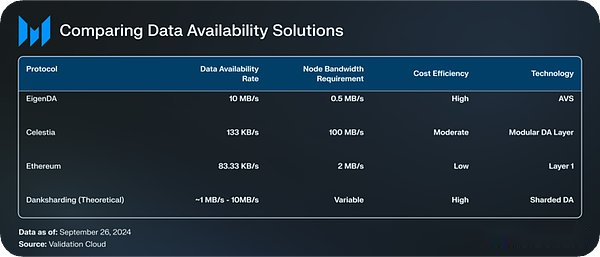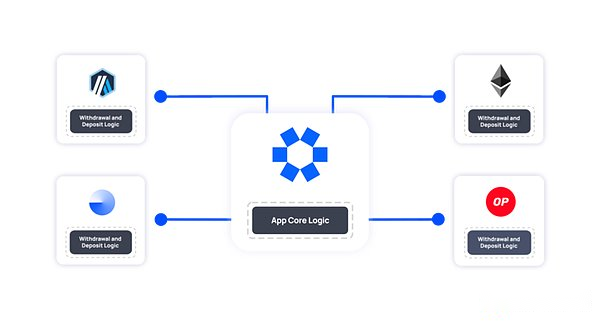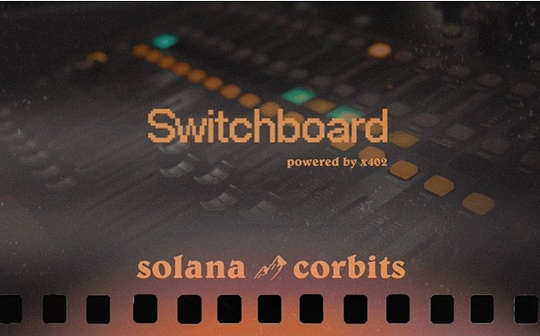
Author: Sam Ruskin, Messari Research Analyst; Compiled by: 0xjs@Bitchain Vision
In this article we will introduce some of the most exciting AVS that utilize the EigenLayer resolution pool.
AVS is any system that requires its own decentralized verification, such as sidechains, data availability layer or oracle.With EigenLayer, these systems can leverage Ethereum’s Proof of Stake (PoS) security to protect their services without having to have their own separate verifiers.This allows AVS systems to benefit from Ethereum’s security while running their own decentralized applications or services.
So what exactly does AVS look like?Here are some exciting AVS I’ve been following:
EigenDA
Developed by EigenLabs, EigenDA is the first active verification service (AVS) to be launched on EigenLayer.It works similarly to other data availability (DA) layers such as Celestia or NearDA, and uses EigenDA’s Rollup to enjoy lower fees and higher throughput
-
In fact, Rollup integrated with EigenDA can increase throughput by 100 times while operating costs by 4 times.

Omini
As more and more Rollups are built on Ethereum, liquidity fragmentation problems are becoming increasingly serious, resulting in ecosystem isolation, inefficient transactions and poor user experience.The Omni protocol aims to address these fragmentation challenges by enabling cross-Rollup communications, unified liquidity pools, and simplifying user experience.
-
Their OMNI tokens are designed to be used as general transaction fee tokens, making it easier to pay gas fees in rollups.Omni’s network is protected by restaking ETH for added security.

Witness Chain
Witness Chain is ideology-like to Omni, aiming to unify the isolated DePIN economy by converting physical properties (position, computing power, network, storage, energy, etc.) into proven digital proofs.
-
Their DePIN coordination layer creates a sharing economy of physical assets, allowing the exchange of resources and information across physical supply chains.








